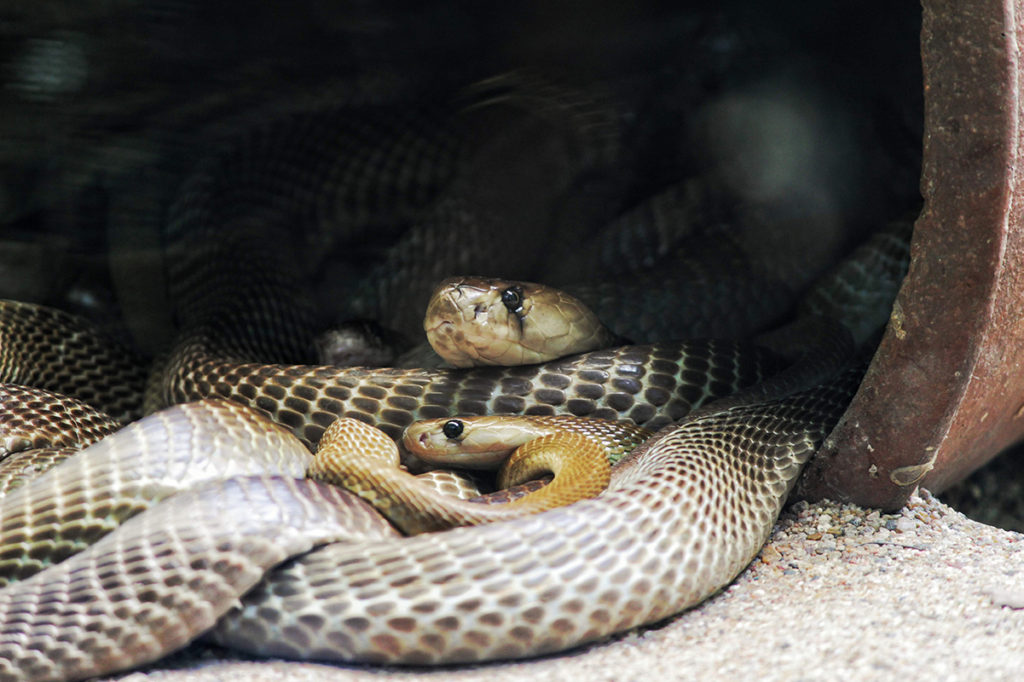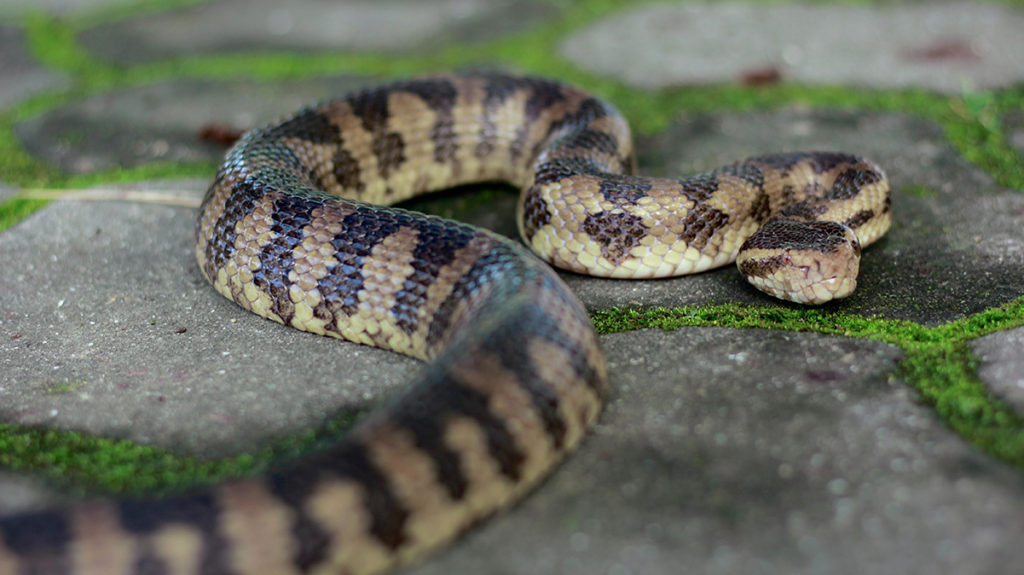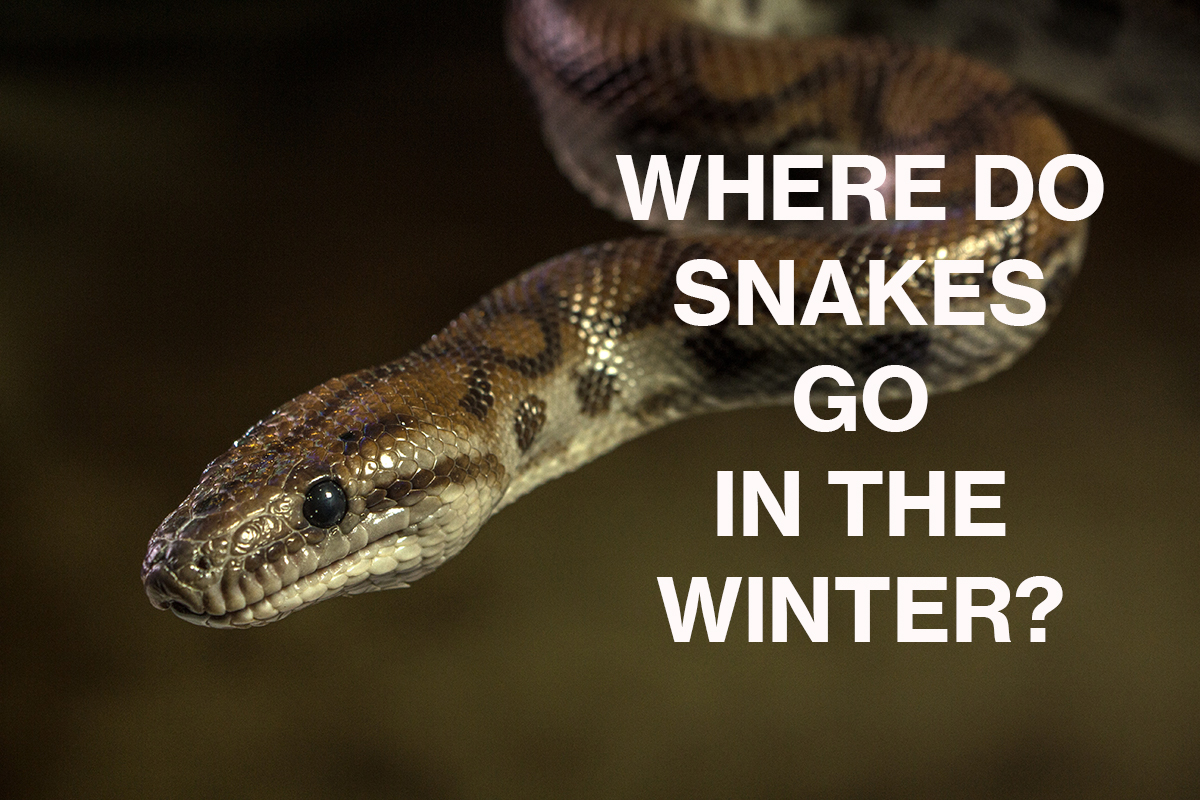Has it ever occurred to you where snakes go in the winter? Surely, we have all seen one but that was perhaps in warm summer days. Where do they go when it gets cold though? We shall explore just that in this article. Read on to learn more.
Hibernation vs Brumation
Most people have heard about the term hibernation, which is simply what happens when certain warm-blooded animals sleep throughout the winter. Snakes on the other hand do not really hibernate in the winter. Instead, they do enter into a state which is known as brumation. While in this state, they are less active and also their metabolism slows down substantially.
There are some similarities between hibernation and brumation such as that reptiles (including snakes) will be sleeping a lot. In hibernation animals stay inactive for the whole winter switching off their body functions dramatically. They do not wake up during their hibernation. You can think of this as a deep sleep.
However, brumation is a lighter sleep from which reptiles occasionally wake up to look for food and water. It can also happen sometimes that temperatures warm up considerably for a couple of days and conditions become more favorable for snakes. Nevertheless, as soon as they detect a temperature drop in the weather conditions, they immediately resume their brumation.
In some parts of the world brumation will start any time between September and December and can continue until March or April. Now that you know what they do during the cold months, let us explore where snakes go in the winter. Read on!
Snakes are Masters at Hiding in the Winter
it is very complicated for cold-blooded animals (aka Ectotherms) to effectively regulate body temperature. This is why, with the appearance of extreme weather conditions, it is very important for snakes to find adequate shelter against excessively cold temperatures. They do this by hiding under rocks, logs, in caves, holes, barns, cavities in tree stumps and in just about any place where it is cozy and warm.
These creatures are extremely quiet and in most cases their presence is not even noticed unless someone inadvertently disturbs them. While you now know where snakes go in the winter, another important skill is learning how to avoid snakes and also how to keep them away from your home.
It is quite simple; you should not have landscaping arrangements or other structures which can make a natural hiding place for snakes in the surrounding area. Also, if rodents are in abundance at your property, the chances are snakes are not far behind. More about that later.
Also Read: What Do Deer Eat in the Winter?
Where Snakes Go in the Winter is All About Survival
Because of their cold-blooded nature, snakes are significantly less active in the winter months when the temperatures are low. In fact because of those cold periods, they will become lethargic. This is why all reptiles manage to survive the cold temperatures of the winter by entering into brumation. It is also true to say that not all snakes make it through this tough time.
If the snake has not eaten for a long time before going into brumation, it significantly reduces its changes for survival. It is because they do not have enough calories stored in their body to survive. If it has eaten just before entering into brumation and the food is still in its stomach unprocessed, it is likely to kill them. Timing is therefore everything.
Cold is not Their Friend
Where snakes go in the winter is vital as it needs to be in places where they are protected from often near freezing temperatures. The coldest temperature snakes can function at is 18 degrees Celsius (64 Fahrenheit). Anything below that temperature is not enough for their body to operate.
Therefore, snakes have to stay some places where freezing temperatures cannot get to them. In some countries the ground can freeze 1.2 m to 1.8m (4 to 6 feet) deep. This means that if snakes are present in that region, you would find them in burrows, rockpiles, cracks and crevices below the freezing line.

They also go and hide in less accessible locations such as dens, cavities, caves and pretty much anywhere quiet and safe to escape the cold temperatures of the winter. They sometimes share dens with other snakes to keep each other warm in brumation. Regardless of their sex, be it males or females, everything is about survival in the winter.
Different species of snakes are also commonly found together. There have been sightings of snakes congregating in their hundreds. Female snakes come out of their hideouts sooner than their male counterparts in Spring. It is because they store sperms inside their body over the winter and have to prepare themselves to lay eggs when they reappear.
Snakes are Highly Receptive to Temperature Changes in the Winter
Quite frankly, the assumptions that snakes and other reptiles are sleeping all winter is a myth. Any change in the weather even in the middle of winter can make weather conditions favorable enough to allow snakes and other reptiles to come out of brumation. The interesting thing is that snakes are highly sensitive creatures who are more than able to sense changes in weather patterns.
Every time temperatures rise, results in an increase in the temperature of a snake’s blood. When this happens, they are significantly more active. They do not, however, move far from their hideouts. They are on the lookout for both water and food in the surrounding areas.
Once those important needs have been satisfied, they can then return to their brumation and sleep for a long time. Because they consume a lot less energy during sleeping, they will not require a lot of feeding. That way they can survive long periods of time without food.
Did you know that the fear of snakes is the second most common phobia among people? The first spot is occupied by spiders by the way. The scientific term for such an emotion is called Ophidiophobia.
Human Interactions with Snakes
While researching this topic of where snakes go in the winter, also take time to think about the inescapable reality that cities and towns are expanding. This has the result that wildlife has a substantially smaller habitat in which to thrive and multiply. This is leaving wild creatures such as snakes with no other choice but to seek alternative places to call home.
In many of those cases that new home can be some part of your property, which is especially attractive to snakes and other reptiles. Because they are so silent and also extremely skilled at blending in with the environment, this can make them extremely difficult to notice. The majority of other intruders reveal their presence in dozens of small ways.

But this is not the case as far as snakes are concerned. They consume their prey whole and therefore, there is simply no evidence. This is why in most cases people are not even aware of the fact that they share their properties with snakes until they accidentally stumble upon one or are actually bitten by one.
Easy Way to Look for Snake Presence in the Winter
There is one clue which cannot be hidden so easily by snakes though. As these creatures grow, they constantly shed their skin and that evidence remain among log piles, old leaves, in rock beds and even on tree branches.
Also remember that they are attracted to warm cozy places such as boiler rooms and basements, those places with a higher humidity. With higher temperatures as well as rough textures, it is exactly what snakes need to quickly shed excess skin. If you spot hard skin and scales on your property, you will know you have an unwelcome visitor.
Many people simply do not like snakes and actually fear these creatures. In fact, the fear of snakes is the second most encountered phobia in the world with spiders in the first place. Therefore, having a scaly resident in your home or business basement is something which can lead to a lot of problems among family or employees.
Also Read: When to Plant Winter wheat?
How to Prevent Snakes from Visiting You before Winter
Snakes like to stay close to their food source. If you happen to have plenty of rodents, lizards or frogs around, it is more likely that their natural predator is close by. Having effective pest control will significantly decrease the chances of you coming into contact with snakes on your property.
Naturally, snakes like to reside in high grass or overgrown vegetation. Cutting your grass regularly will discourage them from seeking refuge on your land. Snakes also love openings. If you have any holes or cavities around your house, fill them up to avoid any problems in the future. They cannot, however, chew to create new openings.
It does help to know that the majority of snakes are actually completely harmless but even so their presence can be very disruptive. In case removing snakes from your property or prevention have proven fruitless, seek pest control professionals.

